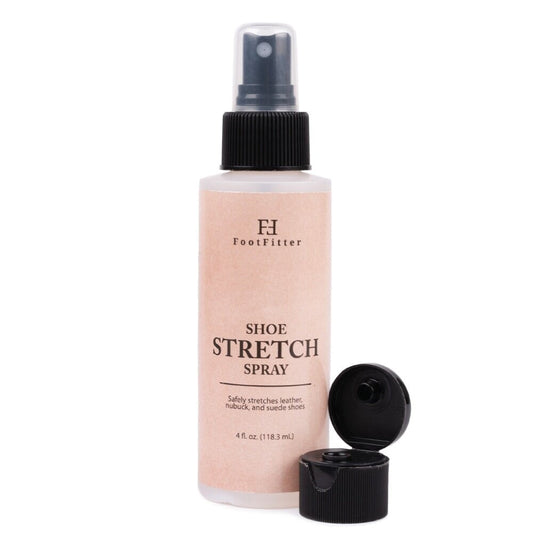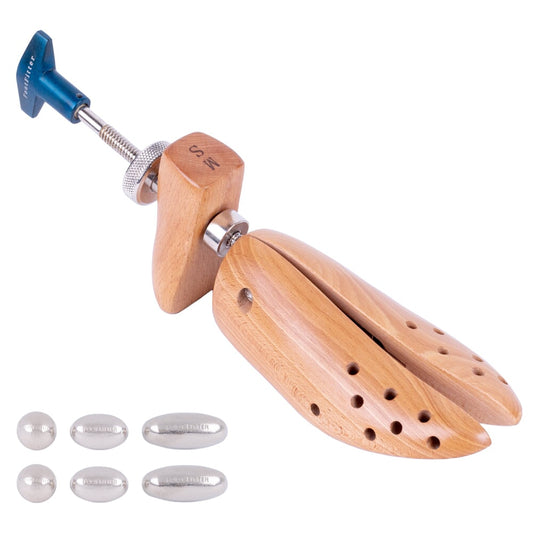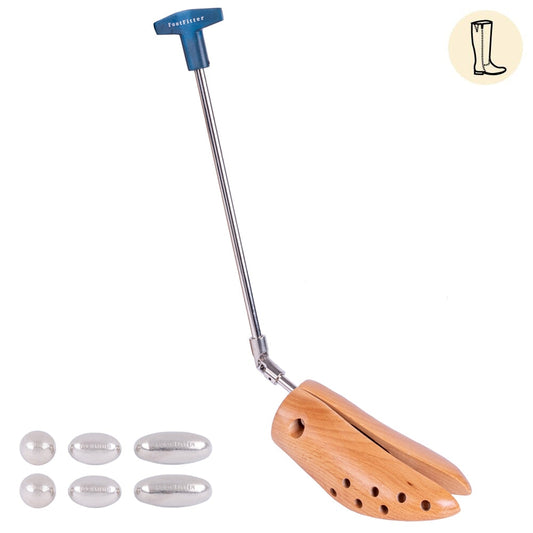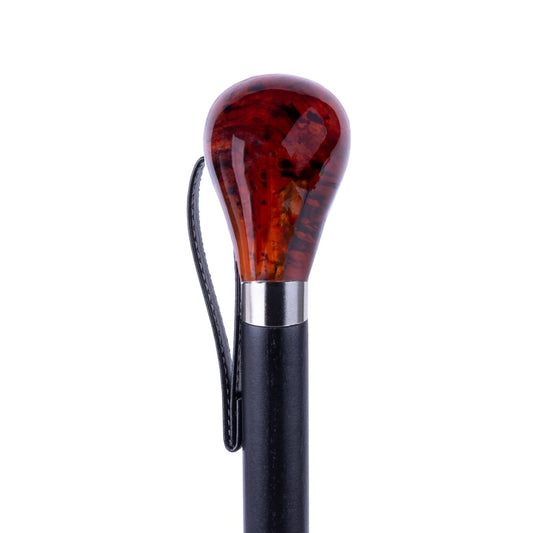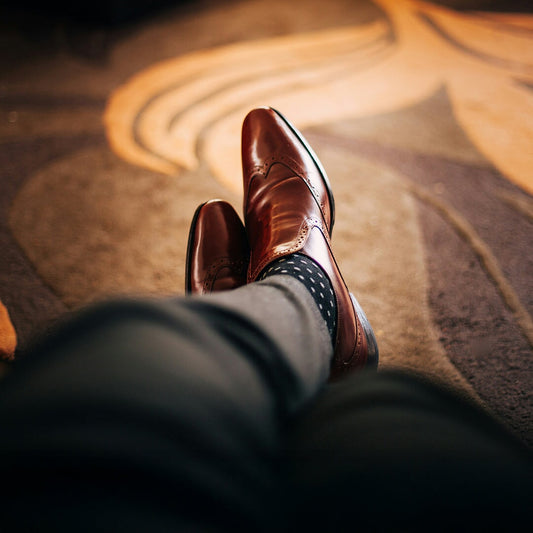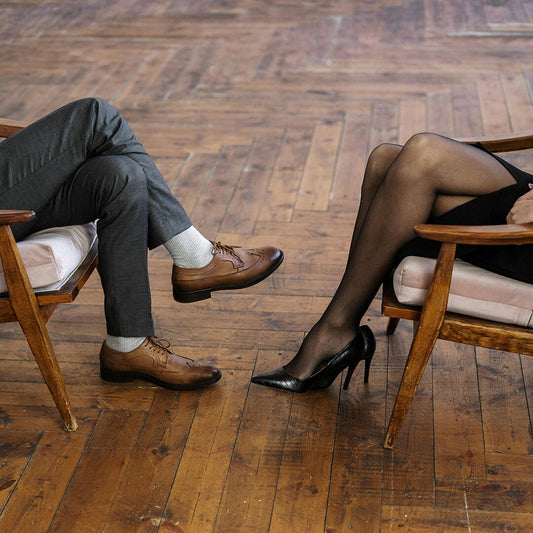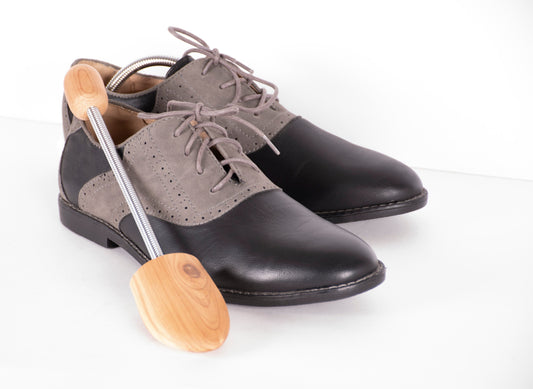
How to Clean Shoes Using Common Household Items
Share
We’ve all been there. You’re sitting at home and suddenly your friends hit you up with last minute plans. This time you have the perfect outfit, but your shoes are looking pretty dirty and dingy. Of course, you don’t want to be the one in the group who has everyone saying, “what are those?” Luckily, there is a solution to get clean shoes without leaving your house.
Here at FootFitter we care about your social standing and comfortability and understand when you’re in a time-crunch, so we compiled a list of the best household items to quickly clean whatever shoes you decide to rock.
First off, you are going to need a brush.
Unfortunately there are times when you don’t have a professional leather shoe brush or suede eraser tool handy when your shoes need a serious deep cleaning.
However, if you are at your house or a friend’s, a few bathroom items will help your quest to clean shoes.

Alex Padurariu via unsplash
Try a toothbrush.
A toothbrush is a good option when you need to remove debris or buff product into tight places.
For the best technique, save the lighter strokes for loosening dirt and sweeping it away. Pull out your harder scrubbing muscles after mixing and applying cleaning solutions to really penetrate the material and clean shoes.
This tool works best on rubber flip-flops, rope wedges, sneakers and canvas shoes. Later on, we’ll explain how toothpaste can also help get canvas shoes to their cleanest potential.
Try a nail brush and file.
Nail products like a bigger scrubbing brush and tough file work well at getting out stubborn stains.
This is especially useful on suede and sheepskin shoes.
Try a white microfiber cloth.
While brushes are great for wiping away debris and working in product to clean shoes, when it comes to shoe shining, it’s time to get a white microfiber cloth out of the closet.
A soft microfiber cloth is important when it comes to more sensitive materials like leather. Its gentle touch will leave a lasting shine without damage.
Next, choose cleaning products depending on your shoe’s material.
When using household products to clean shoes, you want to make sure that you are not using materials that will damage your shoes. After all, the goal here is to make them look better, not worse.
For leather shoes, try white vinegar and baking soda.

Start off by diluting a cup of white vinegar with 50 percent water. Once you have your new solution, use your cloth to buff out stains.
After the stains lift, it’s time to address the scuffs. For this part, wait until your shoes are dry from the first step. Then, take another clean cloth and dip it into your baking soda. Using wiping and buffing motions, the baking soda should remove scuffs with ease.
For patent leather shoes, try Windex and petroleum jelly.

Windex isn’t just good at making glass gleam with a see-through shine. It can also be useful at giving your patent leather shoes the appearance of a glass-like reflective shine.
However, using the Windex should be your final step. To first clean shoes made from patent leather, apply petroleum jelly to a cotton ball. Rubbing this product into your patent leather will remove scuffs and stains.
For suede and sheepskin shoes, try vinegar and rubbing alcohol.

After scrubbing away stubborn suede stains and scuffs with your makeshift brushes and nail file, your suede or sheepskin will need some TLC.
To revive the delicate material, use a white wash cloth with either white vinegar or rubbing alcohol to increase your suede shoe’s vibrancy. When it comes to sheepskin, it is best to make your polishing mix from cold water and distilled vinegar.
With these types of shoes being sensitive to water, less is more. It is also important to use newspaper or a shoe tree to allow your shoes or boots to keep their form while drying.
For canvas shoes, try toothpaste.

Apostolos Vamvouras via unsplash
When it comes to canvas shoes, both your toothbrush and toothpaste will be useful. To begin, use your toothbrush to buff in toothpaste to any dirty marks.
Moving your brush back and forth and in circular motions should lift any imperfections. After you achieve clean shoes, use a damp cloth to wipe away any extra toothpaste residue.
For sneakers, try nail polish remover.

For white sneakers, nail polish remover works great at removing stains. Usually this eliminates the need to use bleach. However, if you do reach for the bleach, less is definitely more. It is important to use about five times as much water as bleach so you do not fade or discolor your shoes.
When it comes to colored sneakers, mixing a teaspoon of laundry detergent with a cup of water will create a solution that is useful on fabric, rubber and mesh. However, you should avoid dampening any leather or foam sections with the mix to avoid damage.
Sneakers can also typically be thrown into the washing machine on delicate to get rid of any excess dirt or marks.
For rubber flip-flops, try baking soda and detergent.

Ridwan Muhamad Iqbal via unsplash
Running around in your flip flops under the summer sun often leads to extra sweat and grime. Baking soda offers a great solution to a smelly situation. Letting the powder sit on your shoes before scrubbing it away with a toothbrush will eliminate any foul smells.
To further clean your rubber flip flops, adding a little vinegar to your wash cycle will bring them back to looking brand new.
For wedges, try dish detergent and carpet cleaner.

José Martin Segura Benites via Pixels
When it comes to wedges, it is important to consider if they are rope wedges (like the ones pictured above) or if they are cork wedges.
For rope wedges, use carpet cleaner. Since the texture imitates carpet, this cleaner or similar upholstery cleaners are useful at revamping your wedges’ appearance. Follow the grain of your shoe to avoid damaging the rope and causing it to fray.
For cork wedges, diluting a half gallon of warm water with a half cup of white vinegar and a little dish detergent creates the perfect solution. Wipe vigorously on the cork until you achieve the perfect pair of clean shoes. Simply wipe away any excess solution with a clean cloth and you’re ready to step out on the town.
Main image by Lia Den via Unsplash


